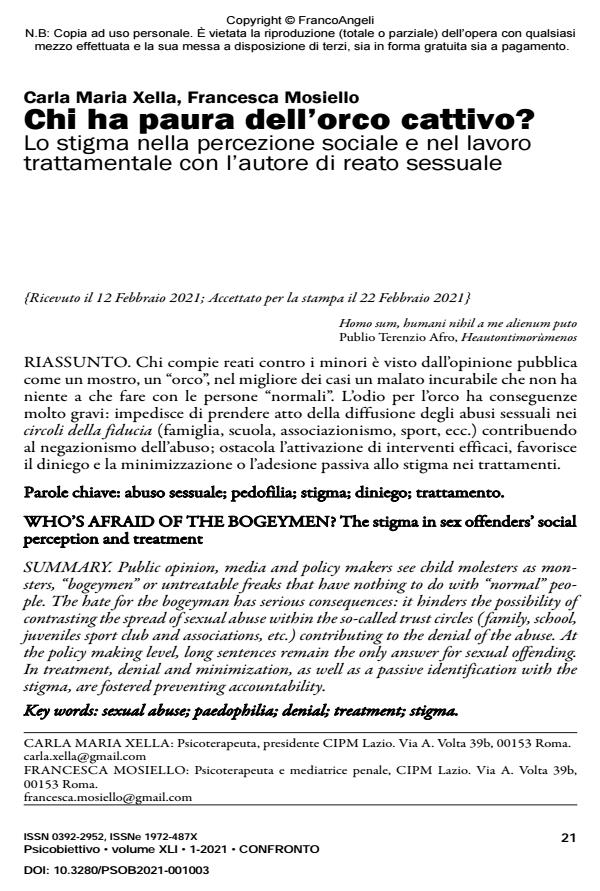Who’s afraid of the bogeymen?
Journal title PSICOBIETTIVO
Author/s Carla Maria Xella, Francesca Mosiello
Publishing Year 2021 Issue 2021/1
Language Italian Pages 13 P. 21-33 File size 163 KB
DOI 10.3280/PSOB2021-001003
DOI is like a bar code for intellectual property: to have more infomation
click here
Below, you can see the article first page
If you want to buy this article in PDF format, you can do it, following the instructions to buy download credits

FrancoAngeli is member of Publishers International Linking Association, Inc (PILA), a not-for-profit association which run the CrossRef service enabling links to and from online scholarly content.
The stigma in sex offenders’ social perception and treatment SUMMARY. Public opinion, media and policy makers see child molesters as monsters, "bogeymen" or untreatable freaks that have nothing to do with "normal" people. The hate for the bogeyman has serious consequences: it hinders the possibility of contrasting the spread of sexual abuse within the so-called trust circles ( family, school, juveniles sport club and associations, etc.) contributing to the denial of the abuse. At the policy making level, long sentences remain the only answer for sexual offending. In treatment, denial and minimization, as well as a passive identification with the stigma, are fostered preventing accountability.
Keywords: Sexual abuse; paedophilia; denial; treatment; stigma.
Carla Maria Xella, Francesca Mosiello, Chi ha paura dell’orco cattivo? Lo stigma nella percezione sociale e nel lavoro trattamentale con l’autore di reato sessuale in "PSICOBIETTIVO" 1/2021, pp 21-33, DOI: 10.3280/PSOB2021-001003